Mechanic - Highway Department
General Purpose:
Repair all County Owned Equipment
Applicants must complete a Standard County Application. Incomplete applications will not be considered.
Qualifications:
- High school diploma or equivalent. Any combination of equivalent education and/or work experience may be considered if substantially related to the detailed job requirements of this position.
- At least 2 years’ experience as laborer with some experience in driving dump trucks or similar trucks and light equipment in maintenance or construction or similar work.
- Must possess a valid State of Nebraska Driver’s License
- Class A CDL with no restrictions
Wages:
$24.00-$26.00 depending on qualifications
Full Detailed Job Description
Application Submission:
Please submit complete application, resume, and cover letter to:
Buffalo County Board Administrator
1512 Central Avenue
PO Box 1270
Kearney, NE 68848
lmartin@buffalocounty.ne.gov
Position will remain open until filled. Applications will first be reviewed on August 4, 2022.
Facilities General Information
The Buffalo County Facilities OMP department strives to provide extraordinary, professional and reliable building management services for all of the county facilities. Our Facilities Staff are trained professionals who are committed to providing a clean, safe, secure and functional building environment for both the county staff and the general public. Buffalo County Facilities OMP includes Operations (Custodial and Maintenance), Management (Facility Rental Use and Administrative Services), and Planning (Short term and long term improvements).
The 14 members of the Facilities OMP staff are responsible for maintaining all County Government buildings, including the Courthouse, Judicial Center, County Jail, Highway Department
buildings, Extension Building, 4 office buildings, and a recreation area with a lake and campground. There are over 30 buildings in total. In addition to these facilities, Facilities OMP maintains 11 parking lots, all walkways, steps and lawns adjacent to these areas, including landscaping, and provides snow and ice removal during the winter. The staff meet regularly to review work practices and safety regulations. They take part in additional training to keep up to date on the latest practices and procedures
relative to the cleaning, maintenance, security, and protection of County facilities, employees, and the general public.
"Facilities Operations" includes:
Custodial Services
Our Custodial Staff are trained cleaning professionals who are committed to providing a safe, clean and presentable building environment. We provide custodial services for 10 of our County buildings, their entrances, surrounding grounds, and parking areas. These buildings include:
--Buffalo County Courthouse
--Buffalo County Judicial Center
--Buffalo County Jail/EOC Center
--DHHS
--Adult Probation
--Juvenile Probation
--Extension Building
--215 Office Building
--Buffalo County Highway Department
--Buffalo County Weed District
Maintenance Services
Our Maintenance Staff are trained maintenance professionals who are committed to providing a safe, secure and functional building environment. Their work includes:
--Planned/Preventative Maintenance - includes inspections, servicing, general upkeep to buildings, equipment and grounds.
--Reactive/Unplanned Maintenance - repairing breakdowns of our facilities and grounds
--Overseeing underground fuel storage tanks/piping/lines and ensuring compliance with government regulations
--Monitoring/Maintaining Building Management Systems including HVAC controls, fire alarm systems, etc.
--Emergency Maintenance - assessing/repairing/coordinating repairs to critical system breakdowns
--Snow and Ice Removal
"Facilities Management" includes:
Facility Rental Use
The Facilities OMP department is responsible for facilitating the rental use of county facilities. At this time the principle location of this usage is the Buffalo County Extension Building. The responsibility includes:
--Schedule the usage of the Extension Building meeting rooms & kitchen, and maintain the master schedule
--Process all requests for usage of the meeting rooms & kitchen, and insure compliance with Board policies and regulations
--Execute rental contracts for outside group usage and collect rental fees associated with each agreement
--Verify appropriate requirements are met by groups using the facility
--Provide Facility Assistant when required, for groups with alcohol
--Provide proper access to scheduled groups
--Prep building for usage and follow up to ensure that it has been returned in proper condition
Administrative Services
Operations
--Ensure compliance with employment rules/regulations, county policies, and all applicable state and federal laws/regulations
--Oversee the daily operations of the Facilities OMP workforce and the work assignments
--Monitor, inspect and review the daily operations of the County facilities and grounds
--Manage installations, repairs, equipment testing and contracted maintenance by outside sources
--Oversee the development and implementation of operational policies and procedures
--Utilize and administer facility/building management software systems to manage the county facilities
--Coordinate professional development of Facilities OMP staff through training and workshops
--Have a representative on the County safety committee and any other committee as requested
Procurement
--Review and manage contracts related to county facilities
--Manage Facilities OMP equipment, materials and supplies and order inventory/supplies when needed
--Develop and maintain strong vendor and contractor partnerships to ensure the best quality, cost, and customer service for the County.
--Procure building equipment and supplies as needed for facilities
Claims/Accounts Payable
--Review and keep record of monthly bills and claims against Facilities OMP, including all utility bills for all County buildings
Budget
--Develop and manage Facilities OMP budgets, including preparing and maintaining a yearly budget
--Create cost estimates for anticipated individual projects.
--Manage budgeted costs on projects as they occur.
Management Software System - Facility Dude
--Facility management software utilized by the County
--Work tickets are generated by county employees needing custodial or maintenance assistance. All work requests need to be submitted on a work request utilizing Dude Solutions software (FacilityDude).
--Work tickets are assigned to Facilities staff and/or contractors for work orders
--Additional "preventative maintenance" work tickets are also generated with FacilityDude for scheduled servicing/inspecting/upkeep.
--Once the work has been completed, the work tickets are closed out and a follow up email is sent to the requestor to let them know that the work has been completed
--Data is collected from the information inputted into FacilityDude and utilized for managing current costs and projecting future expenses/budgeting
"Facilities Planning" includes:
Planning, Design & Development
--Develop and implement one, two and six year department plans
--Small Scale - Develop and implement small scale adjustments to
existing spaces to keep space up to date and adequate for current
usage needs.
--Large Scale - Coordinate design, engineering and construction of all Capital improvements including new buildings, new additions to existing buildings, and remodels of existing buildings.
--Ensure compliance with all applicable local, state and federals laws and regulations related to buildings and grounds
2016 Board of Commissioners Agendas/Minutes/Notices
Buffalo County furnishes the public information contained herein as a public service. This information may not reflect the most recent resolutions of the County Board and if the resolutions need to be legally relied upon, the most current version may be obtained at the office of the County Clerk. Please also read the disclaimer statement.
Open Meetings Act (effective July 19, 2012).
Zoning packets are available upon request from the Zoning Administrator.
Please choose the Agenda you wish to view from the list below.
Minutes
Board Meeting Notices, Agendas, and Minutes
| Date |
Notice |
Agenda |
Minutes |
| January 12, 2016 |
Notice |
Agenda |
Minutes |
| January 26, 2016 |
Notice |
Agenda |
Minutes |
| February 9, 2016 |
Notice |
Agenda |
Minutes |
| February 23, 2016 |
Notice |
Agenda |
Minutes |
| March 8, 2016 |
Notice |
Agenda |
Minutes |
| March 22, 2016 |
Notice |
Agenda |
Minutes |
| April 12, 2016 |
Notice |
Agenda |
Minutes |
| April 26, 2016 |
Notice |
Agenda |
Minutes |
| May 10, 2016 |
Notice |
Agenda |
Minutes |
Budget Committee
May 16,17,23,24, 2016 |
Notice |
Agenda |
Minutes
|
| May 24, 2016 |
Notice |
Agenda |
Minutes |
| June 14, 2016 |
Notice |
Agenda |
Minutes |
June 15, 2016
(Board of Equalization only)
|
Notice |
Agenda |
Minutes
|
June 20, 2016
(Board of Equalization only)
|
Notice |
Agenda |
Minutes |
June 28, 2016
|
Notice |
Agenda |
Minutes |
July 5, 2016
(Board of Equalization only)
|
Notice |
Agenda |
Minutes
|
July 11, 2016
(Board of Equalization only)
|
Notice |
Agenda |
Minutes
|
July 12, 2016
|
Notice |
Agenda |
Minutes |
July 12, 2016
(Board of Equalization only)
|
Notice |
Agenda |
Minutes |
July 13, 2016
(Board of Equalization only)
|
Notice |
Agenda |
Minutes |
July 14, 2016
(Board of Equalization only)
|
Notice |
Agenda |
Minutes
|
July 15, 2016
(Board of Equalization only)
|
Notice |
Agenda |
Minutes |
July 18, 2016
(Board of Equalization only)
|
Notice |
Agenda |
Minutes |
July 19, 2016
(Board of Equalization only)
|
Notice |
Agenda |
Minutes |
July 20, 2016
(Board of Equalization only)
|
Notice |
Agenda |
Minutes |
July 21, 2016
(Board of Equalization only)
|
Notice |
Agenda |
Minutes |
July 22, 2016
(Board of Equalization only)
|
Notice |
Agenda |
Minutes |
July 23, 2016
(Board of Equalization only) |
Notice |
Agenda |
Minutes |
July 25, 2016
(Board of Equalization only)
|
Notice |
Agenda |
Minutes |
| July 26, 2016 |
Notice |
Agenda |
Minutes |
| August 9, 2016 |
Notice |
Agenda |
Minutes |
| August 23, 2016 |
Notice |
Agenda |
Minutes |
| September 13, 2016 |
Notice |
Agenda |
Minutes |
| September 27, 2016 |
Notice |
Agenda |
Minutes |
| October 11, 2016 |
Notice |
Agenda |
Minutes |
| October 25, 2016 |
Notice |
Agenda |
Minutes |
| November 8, 2016 |
Notice |
Agenda |
Minutes |
| November 22, 2016 |
Notice |
Agenda |
Minutes |
December 5th, 2016
(Road & Bridge) |
Notice |
Agenda |
Minutes |
| December 13, 2016 |
Notice |
Agenda |
Minutes |
December 13, 2016
(ADA Public Forum) |
Notice |
|
|
| December 27, 2016 |
Notice |
Agenda |
Minutes |
2015 Archive
2014 Archive
2013 Archive
2012 Archive
2011 Archive
2010 Archive
Board of Adjustment Members
District 1
|
|
|
|
Barb Pemberton Riege
Chairperson
|
3515 Coal Chute Rd
Kearney, NE 68847
308-234-3748
|
Term
expires 12/13/2025 |
|
Rodney Gangwish
Second Vice-Chairperson
|
52685 70th Rd
Shelton, NE 68876
308-647-6960
|
Term
expires 12/13/2025 |
District 2
|
|
|
|
Richard Pierce
Vice-Chairperson
|
33560 Highway 183
Miller, NE 68858
308-457-3605
|
Term
expires 1/11/2025
|
District 4
|
|
|
|
Larry Hardesty
|
7240 W 37th St.
Kearney, NE 68845
308-293-1764
|
Term expires 8/8/2026
|
District 5
|
|
|
|
Tammy Jeffs
|
1602 W 38th Street.
Kearney, NE 68845
308-865-5675
|
Term expires 12/10/2027
|
Alternate (District 3)
|
|
|
|
Rich White
|
16 Redwood Dr.
Kearney, NE 68845
308-293-6088
|
Term expires 8/8/2026
|
Services
| Assessor |
| Valuation protest information |
| Homestead
exemptions |
| Mobile
home ownership transfer |
| Charitable, religious, and educational tax exemptions |
| |
| Attorney |
| Prosecute cases |
| Collect bad checks |
| Child Support |
| Inheritance tax review |
| |
| Board of Commisioners |
| Board of Commissioners minutes |
| Board of Commissioners agendas |
| Board of Commissioners notices |
| Property tax protests |
| |
| Clerk |
| Marriage
license information |
| Military discharge information |
| Proof
of publications |
| Corporations |
| Partnerships |
| County budget |
| County vendor claims |
| County payroll information |
| School census records |
| Minutes
of the Board of Commissioners meetings |
| Waste hauler permits |
| Tobacco licenses outside city limits |
| |
| District Court |
| Issue
writs and orders |
| Collect
and dispense fees for Child Support |
| Keep
records, books and papers pertaining to court |
| Record
proceedings of court |
| Issue passports |
| |
| Election |
| Voter information |
| Voter registration |
| Absentee voting |
| Absentee ballot |
| Polling places |
| Election calendar |
| Election results |
| Poll worker information |
| |
| Floodplain |
| Issue
floodplain permits for residences or structures |
| |
| Highway |
| County road information |
| County bridge information |
| |
| Public Defender |
| Court appoints to defend someone who can not hire their own
attorney |
| |
| Register of Deeds |
| Mortgages |
| Deeds
of trust |
| Plats |
| Old land records |
|
| Sheriff |
| Enforce laws |
| Preserve
the peace |
| Provide
a safe environment |
| Answer
911 calls and dispatch appropriate authority |
| |
| Surveyor |
| Establish
boundaries |
| Locate lots, plots, parcels, tracts, or division of land |
| Division
may include distance, direction, elevation and acreage |
| Furnish legal descriptions to be used in the platting or subdividing
of land |
| Determine
the amount of acreage in land surveyed |
| Establish
and reestablish corners |
| Topographical
plat |
| |
| Treasurer |
| Tax payment information |
| Drivers license |
| CDL's |
| Learner's permits |
| ID
cards |
| Motor vehicle licenses and registrations |
| Boat registrations |
| Specialty license plate applications |
| |
| Veteran Services |
| Veteran's benefits |
| Military discharge records |
| |
| Weed Control |
| Plant identification |
| Weed control issues |
| Enforcement
of state weed laws |
| |
| Zoning |
|
Approve and issue zoning permits
|
|
Receive applications for zoning variance permits
|
|
Receive applications for change of zoning permits
|
|
Receive applications for special use permits
|
|
Conduct inspections of setbacks and
uses of land
|
Severe Weather
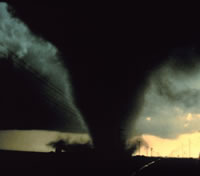 Severe storms strike quickly! Thunderstorms can produce heavy rain, strong winds, lightning, hail and tornadoes. You may need to respond promptly to one of these threats posed by a storm in your area. Severe storms strike quickly! Thunderstorms can produce heavy rain, strong winds, lightning, hail and tornadoes. You may need to respond promptly to one of these threats posed by a storm in your area.
The National Weather Service, in cooperation with the broadcast media, BuffaloWatch and the local spotter system, will provide you with the warnings you need to quickly respond. If you listen to the media, you will know when a storm is approaching your area and you will know if you need to take protective action.
Watch or Warning
A Severe Thunderstorm Watch means conditions are right for the  development of storms. Stay tuned to the media for further advisories. development of storms. Stay tuned to the media for further advisories.
A Severe Thunderstorm Warning means a storm is probable in the warned area and residents there should be prepared to take cover.
Don’t wait until an emergency siren sounds to start looking for flashlights and other things. Plan ahead. When severe storms threaten, keep alert. Stay tuned to the media for current information. Know where to find shelter. Pick the safest spot. Make sure the entire family knows where to go – at home, at work, in school, at the mal l- anywhere they might be when the storms strike. Avoid traveling.
If you live in a mobile home, you should make sure the mobile home is securely anchored. During storm warnings, you should seek more secure cover and have a plan that includes abandoning your mobile home.
Flash flooding
Floods kill more people on average than tornadoes and lightning combined! Most flood deaths are due to flash floods. Flash floods are often the result of heavy rains associated with severe thunderstorms. You will not always have a warning that these deadly, sudden floods are coming.
When a Flash Flood Watch is issued, be alert and be ready to evacuate on a moment’s notice. When a Flash Flood Warning is issued, or the moment you realize a flash flood is imminent, act quickly to save yourself. You may only have seconds.
Nearly half of all flash flood fatalities are auto related. In your automobile, look out for flooding at highway dips, bridges and low areas. Do not drive through flowing water. A mere two feet of water will carry away most automobiles.
Lightning
Lightning kills between 75 and 100 people nationwide annually.
During thunderstorms, stay inside. If you are outdoors, an automobile is a safe place to be. Indoors, keep away from doors, windows, stoves, sinks, metal pipes or other conductors. Disconnect electrical appliances such as TV’s, radios and computers.
Outdoors, minimize your height but don’t lie flat. Do not take shelter under a tree. Stay away from wire fences, overhead power lines and other metallic conductors. Avoid standing in small sheds in open areas.
Tornadoes
The most destructive and devastating product of a thunderstorm, these violent "twisters", are characterized by a twisting, funnel-shaped cloud, which forms from the bottom of a wall cloud and touches the ground.
Tornadoes are often accompanied by lightning, heavy rain and hail. In an average year, the United States reports 800 tornadoes resulting in 80 deaths and 1,500 injuries.
While they can occur all year, they are most common during the spring in the Great Plains, where they develop along “drylines,” which separate very warm, moist air to the east from hot, dry air to the west. Tornado-producing thunderstorms may form as the dryline moves east during the afternoon hours.
Nebraska is in the middle of tornado alley and each year the state averages 35 tornadoes.
Knowing tornado safety is your best hope for surviving. You must have a PLAN.
Stay tuned to the media when the watches are sounded and be prepared to seek shelter if a tornado warning is issued in your area. The safest place to be when a tornado strikes is in a basement under something sturdy like a workbench.
If your house doesn’t have a basement, seek shelter in a small room in the middle of the house. A closet or bathroom is best. The more walls between you and the approaching storm the better.
Have a portable radio and flashlight handy to take with you.
If you live in a mobile home, even those with tie-downs, seek more permanent shelter. Go to a prearranged shelter. Go to a friend’s house or a nearby structure with a basement. As a last resort, go outside and lie flat on the ground with your hands over your head and neck.
In an automobile, never try to outrun a tornado. Tornadoes can toss cars, and even large trucks, around like toys. Get out of your vehicle and seek a safe structure or lie down in a low area with your hands covering the back of your head and neck; keep alert for flash floods.
At Work or School, know the emergency shelter plans. If no specific plans exist, go to an interior hallway or small room on the building’s lowest level. Avoid areas with glass and wide, freespan roofs.
In a store or shopping mall, if you can’t get to a basement or designated shelter, go to the center of the lowest level of the building. Avoid windows and lie flat. Cover yourself with any handy object.
Most towns in Nebraska sound the sirens when tornado warnings are issued or a funnel cloud is sighted. Some times there are no warnings though. The best bet is to be aware of weather conditions and be prepared to seek shelter.
A Tornado Watch is issued when conditions are favorable for them to develop. Be prepared to take action.
A Tornado Warning is issued when radar indicates a tornado, or if a funnel cloud has been sighted. Seek shelter immediately.
Potential Shelter List

Subdivision Road Specifications, RL-3
Minimum Right of Way-66 feet requirement
Design Speed (MPH)-30 MPH or less
Maximum Curve (degree)-23.0 degree
Maximum Grade (%)-10%
Number of Lanes-2
Lane Width-10 feet each
Shoulder Width (feet)-3 feet
Lateral Obstacle Clearance (feet)-5 feet
Surface Type Minimum--Gravel
Drainage Facilities
Buffalo County will require the number of structures to
accommodate adequate water drainage (culverts and bridges), as well
as adequate drainage ditches to insure a safe travel surface for the
traveling public. The County will not be responsible for any drainage
structures that have not met requirements.
Turn Arounds
Minimum radius of 66.0 feet on dead end roads for adequate machine
turn arounds.
Signing
Proper signing will be required on intersections within the
subdivision as well as on main roads outside and/or leading into a
subdivision. This includes proper dead end signs, obstacle markers and
speed signs.
Driveways
Paved and hard surfaced driveways will be the responsibility of the landowner
in the event of any reconstruction or maintenance work. New driveways within
the subdivision are the responsibility of the landowner. Landowners must obtain
a driveway permit from the County Highway Department, whereupon the Highway
Department will check the location for drainage and/or culvert size. If a
culvert is required, it will be the responsibility of the landowner to purchase
the culvert and install it.
Trees, Etc.
Trees, shrubbery or flowers will not be allowed within the 66.0 feet of
right of way, nor will fences be allowed within this right of way.
Snow Removal
Snow removal will consist of the traveled surface only as low priority.
Driveways will be the responsibility of the landowner or tenant.
Maintenance
Those gravel roads within the subdivision will be treated as low priority
as compared to other County gravel roads. Paved or hard surface roadways within
the subdivision will be the responsibility of the subdivision as far as maintenance,
patching, resurfacing or complete reconstruction. Buffalo County will assume snow
removal of the traveled roadway only. Any outside construction or maintenance work
done on those roads within the subdivision by a contractor or resident will not be
the responsibility of Buffalo County liability and/or cost.
For additional information, please contact the Highway Department at 308-236-1237.
Winter Weather Preparedness
Each year, the National Weather Service issues numerous watches, warnings and advisories. Knowledge of those products is a critical element in winter weather preparations.
- Winter Storm Watch - Adverse winter weather (heavy snow, blizzard) is expected within the next two days, but the exact timing, location or occurrence of the storm is still uncertain. This is the time to get prepared for the storm.
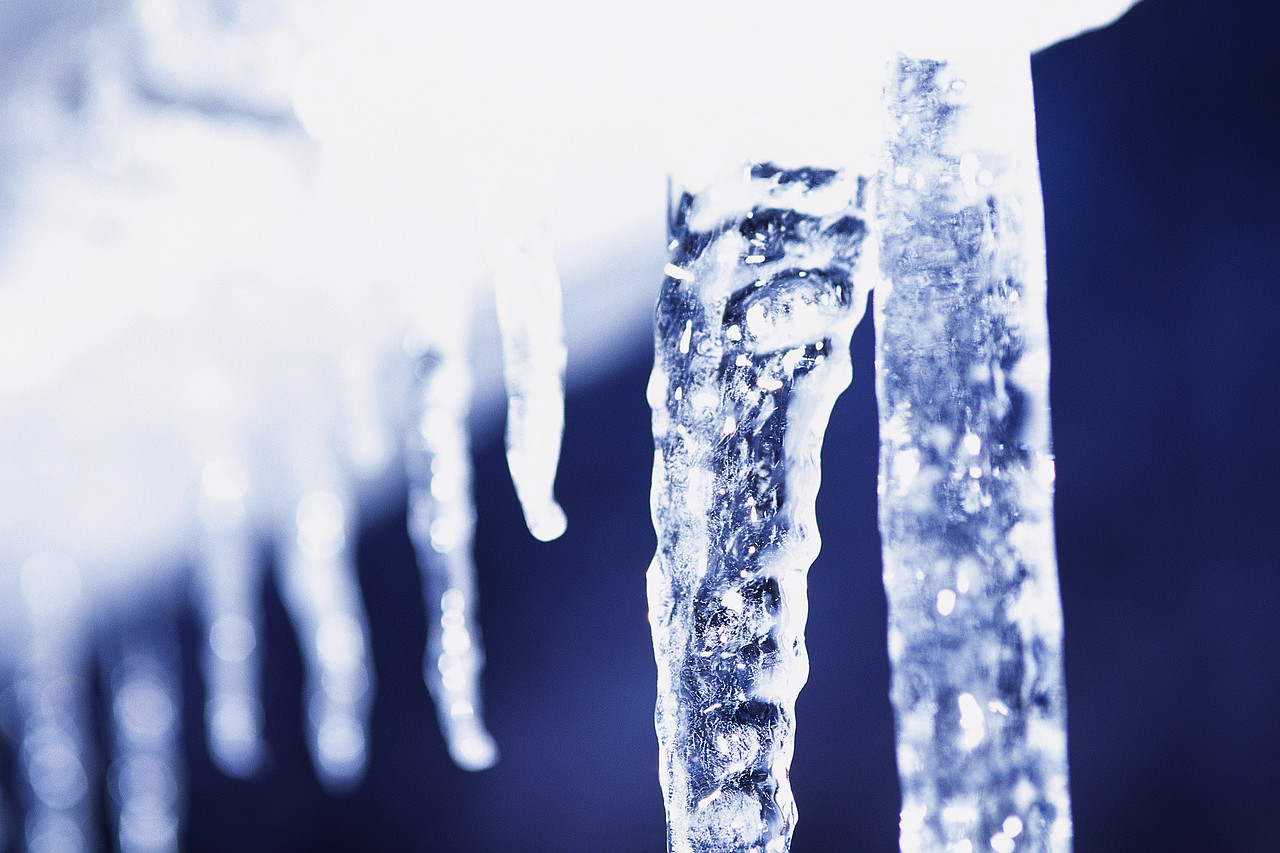
- Winter Storm Warning - Hazardous winter weather is likely. If not already occurring, it is expected to occur within 6 to 24 hours. Travel will be hazardous, if not impossible. You should be ready for the storm by this time. Stay indoors!
- Blizzard Warning - The most dangerous of all winter weather will occur in your area. A combination of winds 35 mph or greater and significant snow and/or blowing snow with visibilities less than ¼ mile for three or more hours is expected in the warning area. Blinding snow ("white out"), deep drifts and life threatening wind chill will occur. Travel will be dangerous and should not be attempted. You should seek refuge immediately!
- Winter Weather Advisory - Winter weather conditions are expected to cause significant inconveniences and may be hazardous. If caution is exercised, these situations should not become life threatening. The greatest hazard is often to motorists.
Things to do at home or work BEFORE a winter storm strikes...
Primary concerns are the potential loss of heat, power, telephone service, and a shortage of supplies if storm conditions continue for more than a day.
Have available:
- Flashlight(s) and extra batteries.
- Battery-powered Weather Radio and portable radio. These are used to receive emergency information. They may be your only link to the outside.
- Extra food and water. High-energy food, such as dried fruit or candy, and food requiring no cooking or refrigeration is best.
- Extra medicine and baby items.
- First-aid supplies.
- Emergency heating source, such as a fireplace, wood stove, space heater, etc. Make sure you know how to uses the heating sources to prevent a fire and make sure you have proper ventilation.
- Fire extinguisher and smoke detector. Test units regularly
to ensure they are working properly. Replace batteries the same weekend as the time change occurs in the spring (daylight-savings time) and fall (standard time).
On the farm....
- Move animals to sheltered areas. Shelter-belts, properly laid out and oriented, are better protection for cattle than confining shelters, such as sheds.
- Haul extra feed to nearby feeding areas.
- Have a water supply available. Most animal deaths in winter storms are from dehydration.
- Heating fuel. Fuel carriers may not reach you for days after a severe winter storm. Stay alert to changing weather conditions throughout the winter to maintain an adequate fuel supply in advance of severe weather moving into the area.
WINTER PRECIPITATION TERMS:
Snow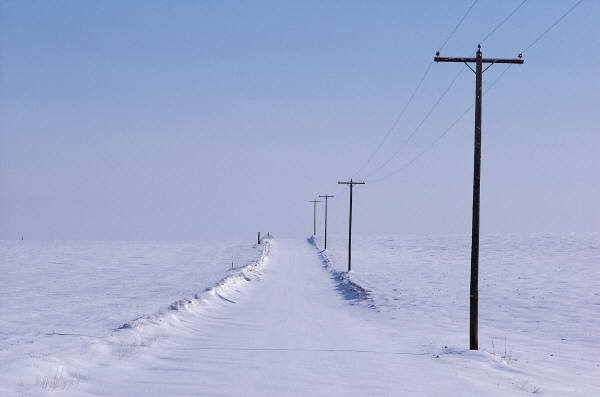
- Flurries - Light snow falling for short durations. No accumulation or light dusting is all that is expected.
- Showers - Snow falling at varying intensities for brief periods of time. Some accumulation is possible.
- Squalls - Brief, intense show showers accompanied by strong, gusty winds. Accumulation may be significant. Snow squalls are best known in the Great Lakes region.
- Blowing Snow - Wind-driven snow that reduces visibility and causes significant drifting. Blowing snow may be snow that is falling and/or loose snow on the ground picked up by the wind.
- Blizzard - Winds over 35 mph with snow and blowing snow reducing visibility to near zero.
Sleet
Is formed by raindrops that freeze into ice pellets before reaching the ground. Sleet usually bounces when hitting a surface and does not stick to objects. However, it can accumulate like snow and cause a hazard to motorists.
Freezing Rain
Is rain that falls onto a surface that has a temperature below freezing. This causes it to freeze to surfaces, such as trees, cars, and roads, forming a coating or glaze of ice. Even small accumulations of ice can cause a significant hazard.
Wind Chill
The wind chill is based on the rate of heat loss from exposed skin caused by combined effects of wind and cold. As the wind increases, heat is carried away from the body at an accelerated rate, driving down the body temperature. Animals are also affected by wind chill.
WINTER DRIVING
The leading cause of death during winter storms is transportation accidents. Preparing your vehicle for the winter season and knowing how to react if stranded or lost on the road are the keys to safe winter driving.
Have a mechanic check the following items on your car:
- Battery
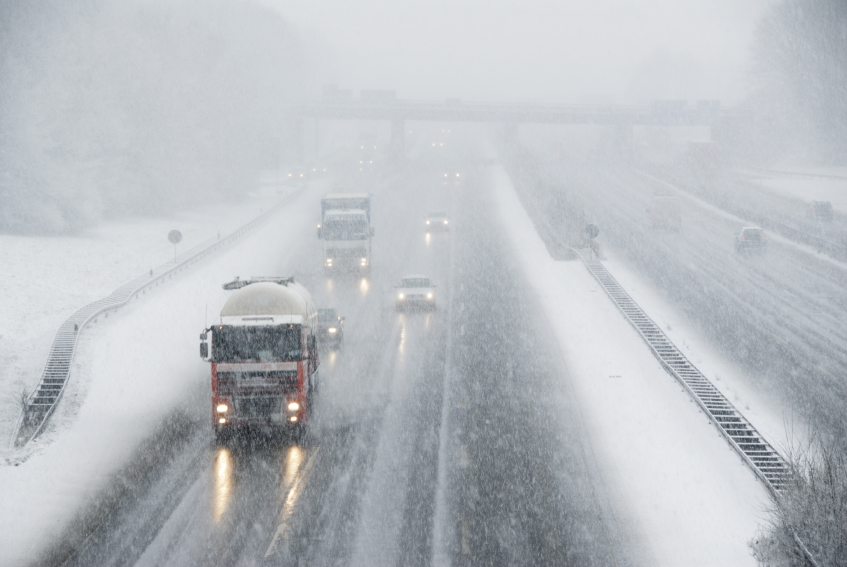
- Antifreeze
- Wipers and windshield washer fluid
- Ignition system
- Thermostat
- Lights
- Flashing hazard lights
- Exhaust system
- Heater
- Brakes
- Defroster
- Oil level (if necessary, replace existing oil with a winter grade oil or the SAE 10w/30 weight variety)
- Install good winter tires. Make sure the tires have adequate tread. All-weather radials are usually adequate for most winter conditions.
- Keep a windshield scraper and small broom for ice and snow
removal.
- Maintain at least a half tank of gas during the winter season.
- Plan long trips carefully. Listen to the radio or Call 511 from anywhere in Nebraska for Nebraska Traveler information for the latest road conditions. Always travel during daylight and, if possible, try not to travel alone.
- Let someone know your timetable and primary and alternate
routes.
- Dress to fit the season. Wear loose-fitting, light-weight, warm clothing in several layers. Trapped air insulates. Layers can be removed to avoid perspiration and subsequent chill. Outer garments should be tightly woven, water repellent and hooded. Wear a hat. Half your body heat loss can be from the head. Cover your mouth to protect your lungs from extreme cold. Mittens, snug at the wrist, are better than gloves. Try to stay dry.
- Carry food and water. Store a supply of high-energy "munchies" and several bottles of water.
Carry a WINTER STORM SURVIVAL KIT in your vehicle that includes:
- Flashlights with extra batteries
- First aid kit with pocket knife
- Necessary medications
- Several blankets
- Sleeping bags
- Extra newspapers for insulation
- Plastic bags (for sanitation)
- Matches
- Extra set of mittens, socks, and a wool cap
- Rain gear and extra clothes
- Small shovel
- Small sack of sand for generating traction under wheels
- Small tools (pliers, wrench, screwdriver)
- Booster cables
- Set of tire chains or traction mats
- Cards, games, and puzzles
- Brightly colored cloth for a flag
- Canned fruit and nuts
- Non-electric can opener
- Bottled water
IF TRAPPED IN CAR DURING A BLIZZARD:
- Stay in the car. Do not leave the car to search for assistance unless help is visible within 100 yards. You may become disoriented and lost in blowing and drifting snow.
- Display a trouble sign. Hang a brightly colored cloth on the radio antenna and raise the car hood.
- Occasionally run engine to keep warm. Turn on the car's engine for about 10 minutes each hour. Run the heater when the car is running. Also, turn on the car's dome light when the car is running. Beware of carbon monoxide poisoning. Keep the exhaust pipe clear of snow and open a downwind
window slightly for ventilation.
- Watch for signs of frostbite and hypothermia.
- Do minor exercises to keep up circulation. Clap hands and move arms and legs occasionally. Try not to stay in one position for too long.
- If more than one person is in the car, take turns sleeping.
- For warmth, huddle together. Use newspapers, maps, and even the removable car mats for added insulation.
- Avoid overexertion. Cold weather puts an added strain on the heart. Unaccustomed exercise such as shoveling snow or pushing a car can bring on a heart attack or make other medical conditions worse. Be aware of symptoms of dehydration.
Highway
 View on map View on map
There are approximately 962
square miles in Buffalo
County. Within this area there are 1500 miles of
road: 112.3 miles are County oil or concrete roads. There are 342 bridges over 20 feet in the
County. There are also 242 bridges that
are 20 feet and under which are not considered bridges but are classified as
culverts because of the constricted water flow.

There are 41 full time employees
and during the summer months we employ three to four more people. In addition to the Highway Superintendent,
there are: one assistant Highway Superintendent, two clerical, two foremen, 19
maintainer operators, five heavy equipment operators, one sign man, one welder,
two mechanics, one mechanic assistant and eight truck driver/operators.
We also have a large inventory of
machines and equipment valued at $9,143,598.00. This includes 21 maintainers, one crane, three backhoes, four loaders, 43
pickups and trucks and a considerable number of other pieces of equipment.
We have an excellent
communication system which includes 2-way radios which are used extensively. They save many miles of driving and enable
people to communicate from one corner of the county to the other. They have saved many maintainer men from
having to walk for help after having a flat tire, being stuck in a snowstorm or
any other emergency type situation. Our
foremen also have cellular phones.
We have 2-way radios in all the
maintainers, office, loaders and in a majority of our other equipment. The radios also give us communication with
the Sheriff’s Department an the County
Surveyor. The telephone system gives us easier
communication with the Sheriff’s Department, Surveyor, other County Courthouse
offices and also the City of Kearney
offices by dialing just four digits.
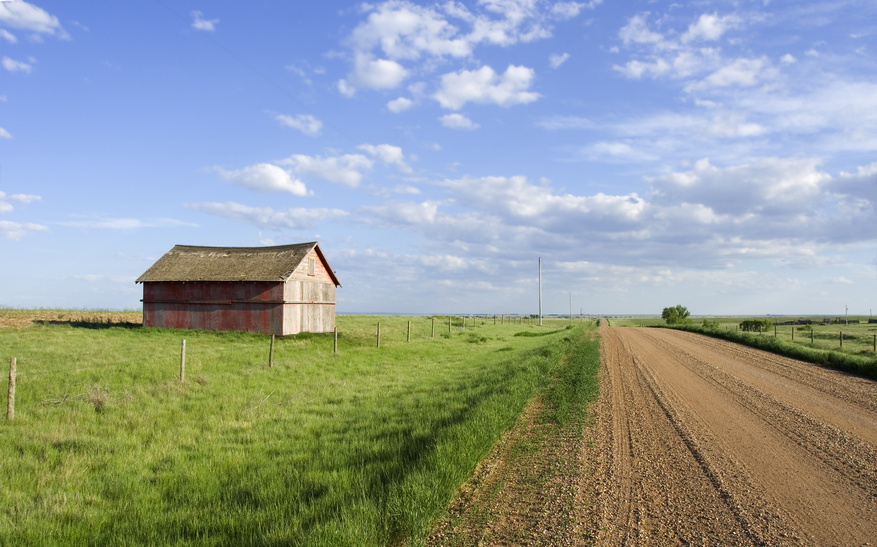
Buffalo County is divided into 26
Townships. We have divided the townships
into Zones 1 through 26. We bid gravel
once a year. The bid period is from
April 1 of one year to March 31 of the following year.
Buffalo County went to the GEO Base Addressing System and signs were installed in 1997. This system makes finding a resident faster in an emergency type situation.
|